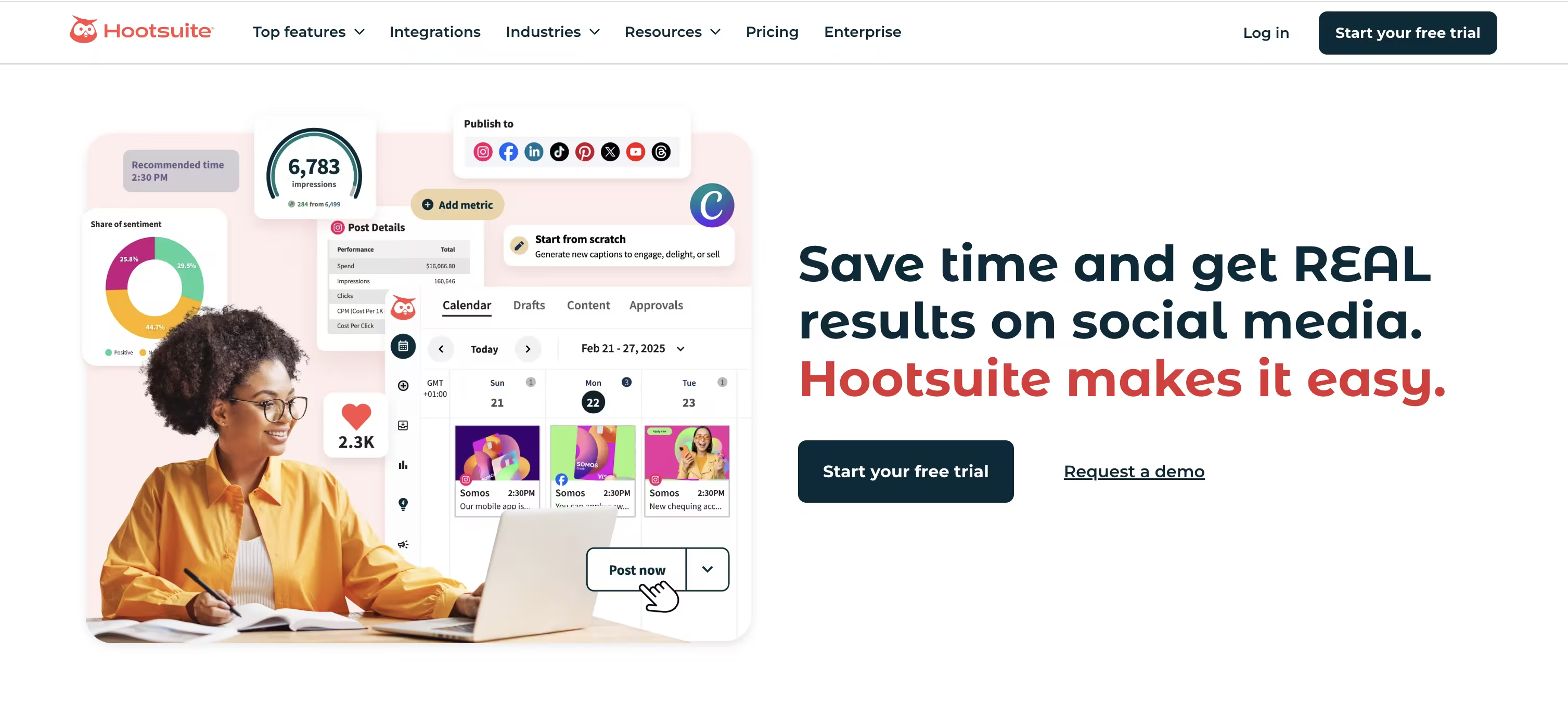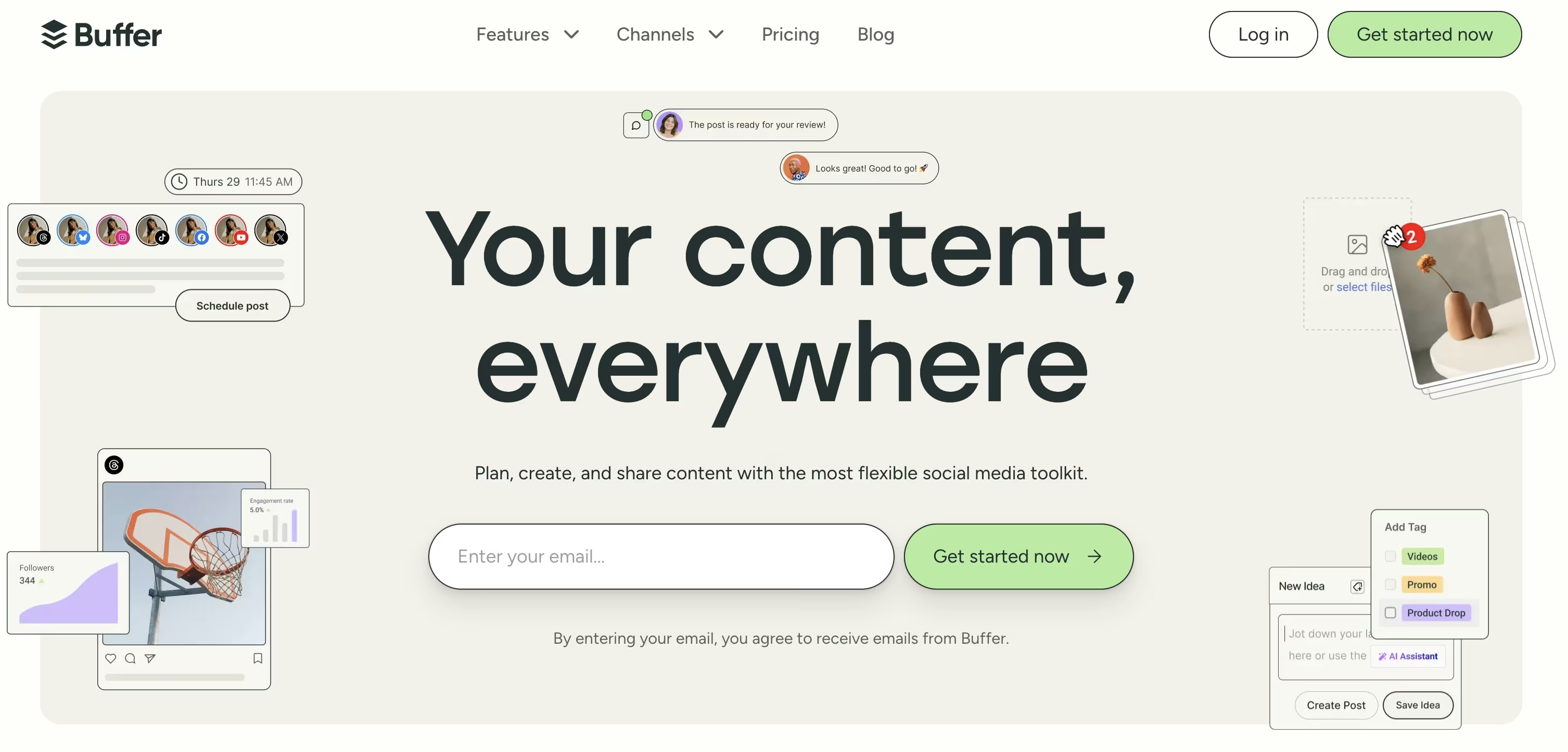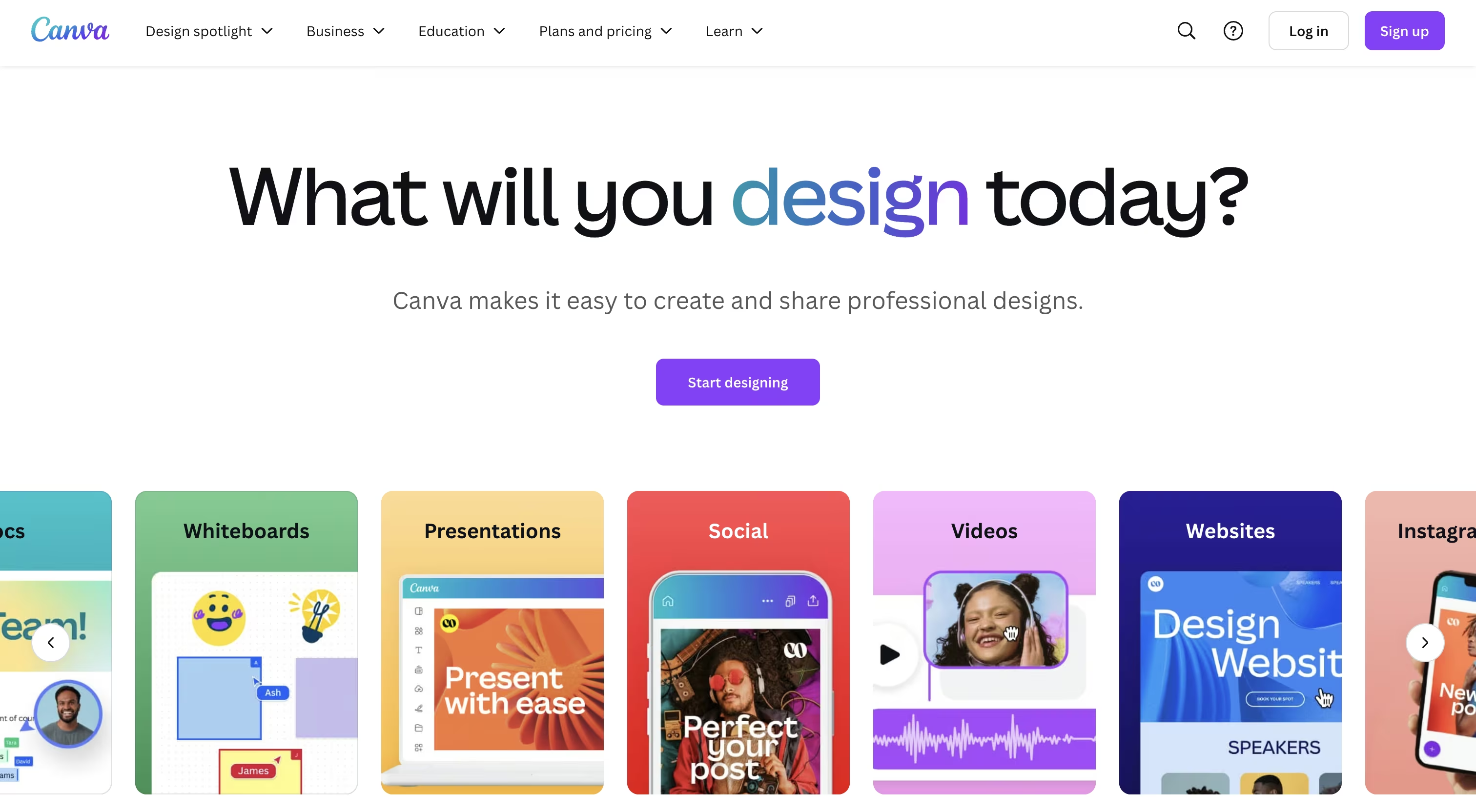
How to Build a Social Media Content Strategy?
Generate the Best Content with AI in Seconds
Generate the Best Content with AI in Seconds
Social media content strategy development requires systematic planning and execution, including content repurposing, for businesses seeking to establish a strong digital presence. Social media content strategy implementation enables brands to cut through algorithm changes and evolving user expectations to capture audience attention and drive measurable business results. The process involves multiple steps from audience research to content calendar creation, ensuring consistent engagement across platforms.
How to Create an Effective Social Media Content Strategy?
Creating a successful social media strategy isn't about random posting or following fleeting trends. It requires a methodical approach that aligns with your overall business goals while addressing your audience's needs.
Before diving into the details, here’s a quick overview of the key steps for developing a high-impact social media content strategy:
- Conduct a [content audit: Analyze your current performance, platforms, and content to identify what’s working and what needs improvement.][strong]
- Define Your Social Media Goals and Objectives: Set SMART goals that align with your business objectives and guide your content direction.
- Identify and Research Your Target Audience: Understand who you're speaking to by researching demographics, interests, and platform behaviors.
- Analyze Competitor Content Strategies: Study your competitors’ approaches to spot content gaps, winning formats, and engagement tactics you can adapt.
- Create Your Brand Voice and Messaging Guidelines: Develop consistent messaging and tone that reflects your brand personality across all platforms.
- Choose the Right Social Media Platforms: Focus on the channels where your audience is most active and that align best with your content type.
- Develop a Content Calendar and Posting Schedule: Plan your content themes, formats, and timing to maintain a consistent publishing rhythm.
- Create Engaging Content for Each Platform: Design platform-specific content that delivers value, encourages interaction, and supports your goals.
- Measure, Analyze, and Optimize Your Strategy: Regularly review performance metrics, test new approaches, and refine your strategy for better results.
Conduct a Social Media Audit
Before planning your future strategy, you need to understand where you currently stand. A comprehensive social media audit helps you evaluate your existing presence and identify opportunities for improvement.
During your audit, be sure to:
- Document all your social media accounts, including inactive ones
- Analyze your performance metrics across each platform (engagement rates, follower growth, conversion rates)
- Review your most successful and least successful content
- Identify which platforms are delivering the best results for your efforts
- Assess your posting frequency and consistency
- Examine your audience demographics on each platform
This audit provides valuable baseline data that will inform your strategy development. Look for patterns in your high-performing content and note any gaps or inconsistencies in your current approach.
Define Your Social Media Goals and Objectives

Your social media efforts should support specific business objectives. Without clear goals, you'll struggle to measure success or justify your social media investments.
When setting your social media objectives, make them SMART:
- Specific : Clearly define what you want to accomplish
- Measurable : Include metrics that allow you to track progress
- Achievable : Set realistic goals based on available resources
- Relevant : Align with your broader business objectives
- Time-bound : Establish deadlines for achieving each goal
Common social media objectives include:
- Increasing brand awareness (measured by reach, impressions, followers)
- Driving website traffic (measured by clicks, referrals)
- Generating leads (measured by form submissions, downloads)
- Boosting engagement (measured by likes, comments, shares)
- Providing customer support (measured by response time, resolution rate)
- Increasing sales (measured by conversions and revenue)
Each objective should have corresponding KPIs (Key Performance Indicators) that you'll use to measure progress. This clarity ensures that every piece of content you create serves a strategic purpose.
Identify and Research Your Target Audience
Effective social media content addresses the specific needs, interests, and pain points of your target audience. Generic content aimed at everyone typically resonates with no one.
To define and understand your target audience:
- Create detailed buyer personas for different audience segments
- Collect demographic data (age, location, income, education)
- Gather psychographic information (values, interests, lifestyle, challenges)
- Research which social platforms your audience prefers
- Analyze when your audience is most active online
- Identify the content types that resonate most with your audience
- Study the language and terminology your audience uses
The more you know about your audience, the better you can tailor your content to their preferences. Consider conducting surveys or interviews with existing customers to gain deeper insights into their social media habits and content preferences.
Analyze Competitor Content Strategies

Studying your competitors' social media presence can reveal valuable insights about what works in your industry and help you identify opportunities to differentiate your brand.
When analyzing competitors, look at:
- Which platforms they're using most actively
- Their posting frequency and timing
- Content types that generate the most engagement
- Their messaging and tone of voice
- How they respond to trends and current events
- The hashtags and keywords they use
- Their audience engagement strategies
- Any gaps or weaknesses in their approach
This competitive analysis isn't about copying your competitors but rather learning from their successes and failures to inform your own strategy. Look for underserved content niches or engagement opportunities that your competitors may have overlooked.
Create Your Brand Voice and Messaging Guidelines
Consistency in voice and messaging helps build brand recognition and trust. Your social media content should reflect your brand's personality and values across all platforms.
To develop your brand voice guidelines:
- Define 3-5 key personality traits that describe your brand
- Create a list of do's and don'ts for your brand voice as part of your content strategy
- Develop sample messaging for different scenarios
- Establish guidelines for using humor, emojis, and slang
- Determine how your voice may vary slightly across platforms
- Create a reference document for all team members who create content
Your brand voice might be formal, casual, inspirational, educational, or playful—but it should always be authentic to your company's values and resonate with your target audience.
Choose the Right Social Media Platforms
Not all social media platforms will be equally valuable for your business. Rather than spreading yourself thin across every network, focus your efforts on the platforms where your target audience is most active and engaged.
Consider these factors when selecting platforms:
- Where your target audience spends their time
- Which platforms align with your content type (visual, written, video)
- Your available resources for content creation and management
- The platforms that best support your specific business goals
- Your competitors' presence and performance across platforms
For most businesses, it's better to excel on 2-3 platforms than to have a mediocre presence on six or seven. Each platform has its own content requirements, audience expectations, and algorithm considerations, so choose strategically based on your specific needs and resources.
Develop a Content Calendar and Posting Schedule

A social media content calendar transforms your strategy from concept to actionable plan. It helps maintain consistency and ensures you're creating a balanced mix of content types.
Your content calendar should include:
- Posting dates and times for each platform
- Content themes or topics for each post
- Content formats (image, video, poll, story, etc.)
- Copy drafts or key messaging points
- Visual elements or assets needed
- Relevant hashtags and keywords
- Team member responsibilities
- Approval workflows and deadlines
Your posting frequency should reflect both your audience's expectations and your team's capacity to create quality content. Consistency is more important than volume—it's better to post three high-quality pieces of content weekly than to post mediocre content daily.
Create Engaging Content for Each Platform
Content creation for social media is where your strategy comes to life. Each piece of content should be platform-appropriate, align with your brand voice, and serve your business objectives.
Effective social media content:
- Provides value (educates, entertains, or inspires)
- Is visually appealing and professionally presented
- Includes strong calls-to-action when appropriate
- Is optimized for each platform's specifications
- Encourages engagement and conversation
- Reflect current trends or timely topics when relevant
- Tells your brand story consistently across posts
Remember that content optimization for social media is crucial. Each platform has its own ideal image sizes, video lengths, and text limitations. Taking the time to optimize your content for each platform dramatically improves its performance.
Measure, Analyze, and Optimize Your Strategy
Social media strategy isn't a "set it and forget it" proposition. Regular analysis helps you identify what's working, what isn't, and how to continuously improve your approach.
Establish a regular cadence for reviewing performance metrics:
- Track KPIs aligned with your objectives
- Compare current performance to baseline and previous periods
- Identify your highest and lowest performing content
- Look for patterns in engagement based on content type, posting time, or topics
- Gather audience feedback through comments, messages, or surveys
- Test new approaches based on your findings
Aim to review basic metrics weekly, conduct deeper analysis monthly, and perform comprehensive strategy evaluations quarterly. This ongoing optimization ensures that your social media efforts continue to deliver results as platforms evolve and audience preferences change.
What Are Essential AI Tools for Social Media Content Strategy?
The right tools can dramatically streamline your social media content management and enhance the quality of your content. AI-powered solutions, in particular, offer game-changing capabilities for social media managers and content creators, particularly in the realm of AI content generation.
Eskritor: The All-in-One Content Creation Solution
Eskritor stands out as a powerful AI content-creation tool that can transform your social media strategy. With its intuitive interface and advanced AI features, Eskritor helps you generate engaging, platform-specific content in minutes rather than hours.
Key features that make Eskritor ideal for social media content creation include:
- AI-powered Content Prompts: Eskritor offers specialized prompts designed specifically for social media platforms like Instagram, YouTube, and blogs. These prompts help you craft content that's optimized for each platform's unique requirements and audience expectations.
- Multiple Content Variations: When you need fresh approaches to similar messaging, Eskritor can generate different versions of your content with varied phrasing and tone, giving you options to choose from or test across campaigns.
- Content Enrichment: The "Enrich" command automatically adds depth to your content by incorporating relevant data, quotes, examples, or analogies that make your posts more informative and engaging.
- Complete Document Editing: Make broad improvements across all your content with a single click, ensuring consistent quality and messaging throughout your social media campaigns.
Top Planning and Calendar Tools to Complement Your Strategy
While Eskritor excels at content creation, these additional tools can help manage other aspects of your social media workflow:

- Hootsuite : A comprehensive platform for managing multiple social accounts, Hootsuite allows you to schedule content, monitor mentions, and analyze performance from a single dashboard.
- Key features: Multi-platform scheduling, team collaboration, monitoring streams, analytics
- Best for: Businesses managing multiple social accounts across various platforms
- Key features: Multi-platform scheduling, team collaboration, monitoring streams, analytics
- Best for: Businesses managing multiple social accounts across various platforms

- Buffer : Known for its user-friendly interface, Buffer simplifies the scheduling process and offers powerful analytics to help optimize your posting strategy.
- Key features: Intuitive scheduling, optimal timing suggestions, engagement metrics, link shortening
- Best for: Small to medium businesses looking for simplicity and efficiency
- Key features: Intuitive scheduling, optimal timing suggestions, engagement metrics, link shortening
- Best for: Small to medium businesses looking for simplicity and efficiency

- Canva : Though primarily a design tool, Canva's social media templates and scheduling features make it valuable for creating and planning visual content.
- Key features: Design templates, brand kit, content planner, direct publishing
- Best for: Teams that need to create consistent visual content without dedicated designers
- Key features: Design templates, brand kit, content planner, direct publishing
- Best for: Teams that need to create consistent visual content without dedicated designers
By combining Eskritor's powerful content creation capabilities with these specialized planning and scheduling tools, you can build an efficient social media workflow that delivers consistent, high-quality content across all your channels.
Conclusion
Building an effective social media strategy isn't a one-time effort but an ongoing process of planning, creating, measuring, and optimizing. By following the nine steps outlined in this guide, you can develop a framework that aligns with your business goals, resonates with your audience, and delivers measurable results.
Remember that consistency and quality matter more than quantity. It's better to excel on a few carefully selected platforms than to spread your resources too thin across many. And with AI-powered tools like Eskritor, you can dramatically increase your content creation efficiency without sacrificing quality or authenticity.
Start implementing these steps today, and you'll be well on your way to building a social media presence that not only captures attention but converts that attention into meaningful business outcomes.
Ready to take your social media content to the next level? Try Eskritor and experience how AI-powered content creation can transform your social media strategy.
Frequently Asked Questions
The best AI tool for creating a social media content is Eskritor. It helps plan, write, and optimize content across platforms using custom prompts, tone adjustments, and platform-specific examples. Eskritor also repurposes content for different formats, saving time while improving consistency and engagement.
Posting frequency depends on your platform, audience, and resources. Quality always trumps quantity—it's better to share 3-4 high-quality posts weekly than daily mediocre content. Start with a sustainable schedule and adjust based on engagement metrics and audience feedback.
A social media strategy covers your overall approach to social platforms, including goals, audience targeting, and platform selection. A content strategy focuses specifically on what content you'll create, how you'll create it, and how it supports your broader marketing objectives. Both work together to drive social media success.
High-performing content varies by platform but generally includes visual elements, solves problems, tells stories, or entertains your audience. Educational content, behind-the-scenes glimpses, user-generated content, and interactive posts (polls, questions) typically drive strong engagement across platforms.
Start by identifying key dates, product launches, and industry events. Then plan content themes and topics that align with your goals. Use a spreadsheet or dedicated tool to schedule posting dates, content types, platforms, copy, and visuals. Include team responsibilities and approval workflows for smoother execution.





 location
location